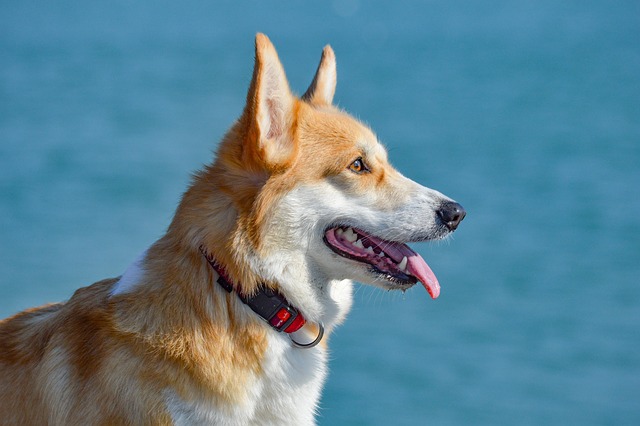
Do vets recommend sunscreen for dogs
In the sun - soaked backyards of California, the sandy beaches of Australia, and the picturesque parks across Europe, dogs frolic under the open sky.
In the scorching summer, the lively figures of dogs bring endless joy to life, but the high temperature also buries hidden dangers to their health. Heat stroke is a major "killer" that threatens the lives of dogs in summer. When our furry children encounter the crisis of heat stroke, how to provide scientific and timely assistance has become a compulsory course for every dog lover.
The heat dissipation mechanism of dogs is very different from that of humans. Humans can dissipate heat through sweating, while dogs' sweat glands are mainly distributed in the pads of their feet and the tip of their noses, and there are almost no sweat glands in other parts of the body. They rely more on rapid breathing to evaporate water from the mouth and tongue to dissipate heat. However, in a high temperature and high humidity environment, the efficiency of this heat dissipation method is greatly reduced, and heat accumulates rapidly in the body, which will cause heat stroke. Heat stroke will not only cause a great burden on the dog's body, but even endanger its life in severe cases. Therefore, timely detection of signs of heat stroke in dogs and taking effective measures is the key to saving their lives.
So, what are the symptoms of heat stroke in dogs? In mild heatstroke, dogs will have shortness of breath, heavy panting, increased drooling, and body temperature usually rises to 39.5℃ to 40.5℃. In addition, dogs may become restless and have difficulty calming down, and their walking posture will become unstable. If the heatstroke develops further and enters the moderate stage, dogs will have symptoms of vomiting and diarrhea, listlessness, dull eyes, bright red or cyanotic mucous membranes, and body temperature may rise to 40.5℃ to 41.5℃. Severe heatstroke is extremely dangerous. Dogs may fall into a coma, convulse, become incontinent, and have a body temperature of more than 41.5℃. If they are not rescued immediately, death may come at any time.
 When a dog is found to have symptoms of heatstroke, time is life, and emergency measures must be taken every minute. First, quickly move the dog to a cool, ventilated place, avoid direct sunlight, and help them get out of the high temperature environment. You can place the dog in an air-conditioned room or in front of a fan, but be careful not to let the cold wind blow directly on the dog to avoid discomfort. Then, apply a wet towel or ice pack to the dog's head, neck, abdomen, and paw pads, which are rich in large blood vessels, to help them cool down quickly. At the same time, give the dog an appropriate amount of clean water to replenish the water lost due to heat stroke, but do not force the dog to drink water to avoid choking. During the initial first aid process, the dog's body temperature should be continuously monitored. When the body temperature drops to around 39℃, the cooling measures should be stopped to avoid secondary damage to the dog's body due to hypothermia.
When a dog is found to have symptoms of heatstroke, time is life, and emergency measures must be taken every minute. First, quickly move the dog to a cool, ventilated place, avoid direct sunlight, and help them get out of the high temperature environment. You can place the dog in an air-conditioned room or in front of a fan, but be careful not to let the cold wind blow directly on the dog to avoid discomfort. Then, apply a wet towel or ice pack to the dog's head, neck, abdomen, and paw pads, which are rich in large blood vessels, to help them cool down quickly. At the same time, give the dog an appropriate amount of clean water to replenish the water lost due to heat stroke, but do not force the dog to drink water to avoid choking. During the initial first aid process, the dog's body temperature should be continuously monitored. When the body temperature drops to around 39℃, the cooling measures should be stopped to avoid secondary damage to the dog's body due to hypothermia.
After completing the initial first aid, even if the dog's symptoms have been alleviated, it must be sent to a pet hospital as soon as possible for a comprehensive examination and treatment. On the way to the hospital, keep the dog quiet and avoid strenuous exercise. You can continue to use a wet towel to cool it down. At the hospital, the veterinarian will use professional equipment and methods to conduct a comprehensive diagnosis and treatment of the dog, including infusion, oxygen inhalation, correction of electrolyte disorders, etc., to ensure that the dog's body recovers.
However, prevention is always better than cure. In order to keep dogs away from the threat of heat stroke, we must take preventive measures in our daily lives. In hot weather, try to avoid taking your dog out for a walk when the temperature is highest at noon and in the afternoon, and choose to go out in the early morning or evening when the temperature is lower. When going out, carry clean water and a portable water bowl with you so that your dog can replenish water at any time. Provide a cool and comfortable living environment for your dog, ensure that the indoor ventilation is good, and use air conditioning or fans to adjust the temperature appropriately. In addition, pay attention to the dog's diet and provide them with more water-rich foods, such as watermelon, cucumber, etc., but be careful to eat in moderation to avoid the dog's stomach getting upset.
Every dog is an important member of our family, and they give us unconditional love and companionship. When they encounter a heat stroke crisis, we must rely on professional knowledge and full of love to provide them with a safe sky. Understand the symptoms and coping methods of heat stroke in dogs, do a good job of prevention, and let dogs live healthily and happily in the hot summer.

In the sun - soaked backyards of California, the sandy beaches of Australia, and the picturesque parks across Europe, dogs frolic under the open sky.

Picture your dog lounging belly-up in the backyard or trotting alongside you on a coastal hike – that sunshine feels glorious

If you’ve ever found yourself staring at your dog’s nails, clippers in hand, and wondering whether to clip them wet or dry, you’re not alone.

If you share your home with a Labrador Retriever, you’re likely no stranger to fur-coated floors, tumbleweeds of undercoat drifting across your kitchen

Ever come home feeling like the weight of the world’s on your shoulders, only to have a furry ball of excitement greet you at the door? That’s just the start of how dogs work their magic on our mental health.

Picture this: it’s bath time for your pup, and you’re fresh out of dog shampoo. As you reach for your own coconut-scented shower gel